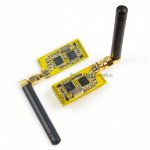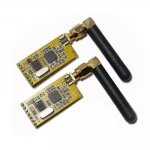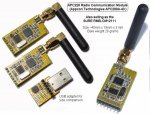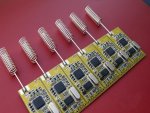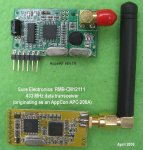Hi,
I am thinking about buying this transmitter: http://www.sparkfun.com/commerce/product_info.php?products_id=8946 and put it to work with the PICAXE 20X2.
I will need 3 transmitters to work at same time sending diferent data (i will use 3 transmitters with 3 picaxes) and only one receiver: http://www.sparkfun.com/commerce/product_info.php?products_id=8950 (attached with one more picaxe).
I read on the above website: "Only one 434MHz transmitter will work within the same location."
my question is: I can not have more than one transmitter sending data at same time? why not?
thank you
I am thinking about buying this transmitter: http://www.sparkfun.com/commerce/product_info.php?products_id=8946 and put it to work with the PICAXE 20X2.
I will need 3 transmitters to work at same time sending diferent data (i will use 3 transmitters with 3 picaxes) and only one receiver: http://www.sparkfun.com/commerce/product_info.php?products_id=8950 (attached with one more picaxe).
I read on the above website: "Only one 434MHz transmitter will work within the same location."
my question is: I can not have more than one transmitter sending data at same time? why not?
thank you

